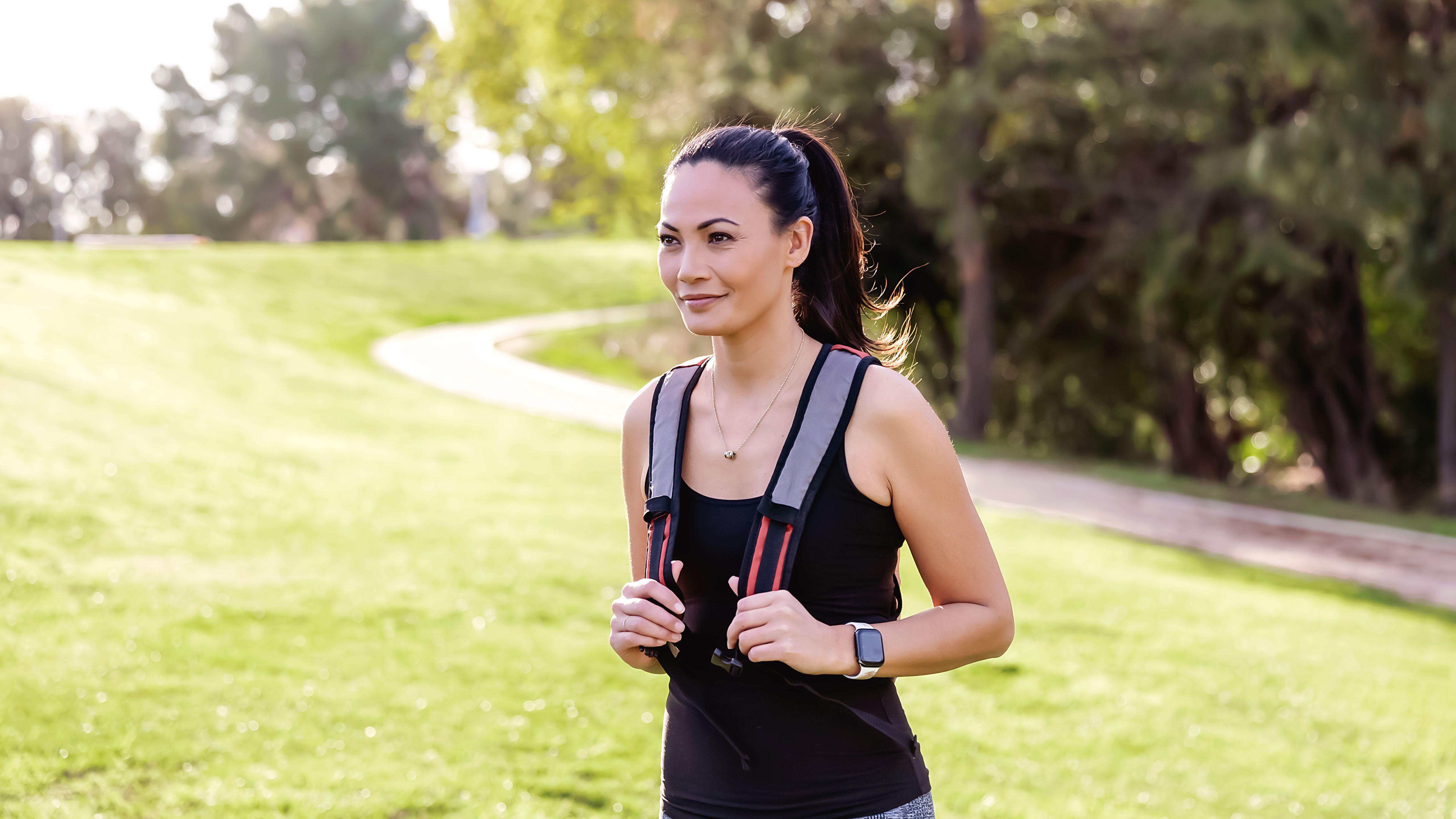I tried rucking as a runner—here’s why I recommend it
It doesn’t just build strength for running, it can help you recover from it too


I’ve run many miles over the past eight years and I am a fan of weight training to improve running performance and develop lean muscle. So when I first heard about rucking—walking with added weight—in 2021 from friends who were taking part in Go Ruck competitions, it grabbed my attention. I consider myself to be a bigger-bodied runner and I pride myself on my strength, so rucking seemed to be something that would work for me.
In fact, rucking is something that can work for most people and it’s well established that it can help to improve markers of run performance—such as VO2 Max and lactate threshold—as well as overall endurance and strength. It’s a low-impact activity and can be safely done by most people if incorporated slowly and cautiously.
I first started rucking using a backpack with 20lb of sand loaded in it. That worked OK, but the load distribution was uncomfortable so I eventually got a tactical weighted vest from 5.11, which was far more comfortable. I typically add a 20lb plate and walk for between 15 and 30 minutes. Unless I’m training for an event that includes a ruck, 15 minutes is plenty for me.
I’d recommend starting with as little as 5lb and slowly working your way up in time and weight. While rucking does have some benefits, adding too much of a load too frequently could put you at risk of stress or overuse injuries.
Here are the three things that surprised me most after my first few rucks.
Rucking complements running
Most runners have heard that cross-training—adding exercise that’s not running to your weekly routine—holds lots of benefits for your running. People tend to choose activities like indoor cycling or the elliptical as their cross-training modalities, but I’ve found rucking to be another good option because it allows me to be out on the trails if I want to be, and it can be incorporated into my daily routine such as when I mow the lawn or walk my dogs.
I was surprised by how much of a full-body workout rucking was and how much it activated the same muscles used for running. My upper back, core and glutes were all called into action, but my knees didn’t feel sore as they would after running.
Start your week with achievable workout ideas, health tips and wellbeing advice in your inbox.
This form of cross-training is a convenient and refreshingly different way to get some strength training and cardio done all in one.
Rucking builds functional strength
While many runners enjoy strength training and find it easy to incorporate into their routines, there are plenty who don’t. Luckily, adding rucking into your routine can help you build strength without feeling like you’re doing another workout.
I love being outside, so I find throwing on my weighted vest and going for a walk or a short hilly hike is more enjoyable than going to the gym.
Carrying the extra weight added on by a ruck challenges your posterior chain—the muscles that run down the back of your body—which can result in better posture and improve your ability to brace your core, which are both beneficial for runners.
One study showed that rucking increases the loading of the skeletal system which is beneficial for bone health. It also increases the forces created by the muscles in your lower extremities, which may benefit your running form.
Rucking can serve as active recovery
Even the day after a long run, your body doesn’t tend to appreciate going from active to sedentary. Even if you feel physically drained, your body still appreciates gentle movement to help it bounce back from the impact of running. Rucking is a great way to experience both recovery and movement.
Once I was rucking regularly, I found that adding a relatively light 5-10lb to a leisurely walk helped to improve circulation throughout my body, which helped to relieve tightness and fatigue in my legs.
As strange as it may sound, I actually felt like my legs were rejuvenated after doing a recovery ruck. On top of that, being able to keep moving even on a rest day benefited both my mental health and productivity even when I was feeling run-down.

Amber is a health and fitness writer and enthusiast, writing for ACTIVE, MarathonHandbook, BarBend and others. Her own health and fitness journey of losing 100 pounds motivated her not only to inspire others through written content but also to become a UESCA-certified running coach. She is a competitive obstacle course racer, trail runner and hybrid athlete. Amber has competed in multiple Spartan events, and has also completed an ultramarathon and a women's pro-HYROX event.
You must confirm your public display name before commenting
Please logout and then login again, you will then be prompted to enter your display name.